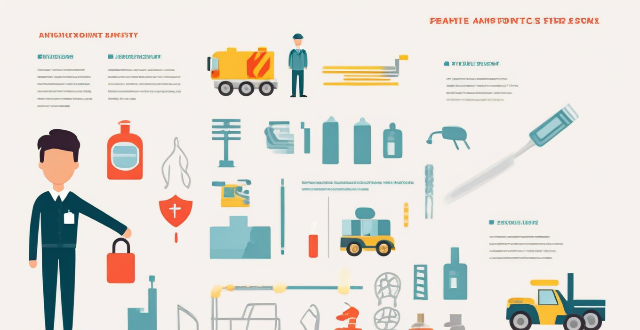Fire prevention is a critical aspect of school safety. Schools should identify potential hazards, develop a fire safety plan, train students and staff on fire safety procedures, install and maintain fire safety equipment, conduct regular fire drills, and encourage student involvement in fire safety efforts. By taking these steps, schools can help ensure the safety of their students, faculty, and staff in case of a fire or other emergency.

How Can Schools Implement Effective Fire Prevention Programs?
Fire prevention is a critical aspect of school safety, and it requires a comprehensive approach to ensure the well-being of students, faculty, and staff. Here are some key steps that schools can take to implement effective fire prevention programs:
Identify Potential Hazards
The first step in implementing an effective fire prevention program is to identify potential hazards within the school building. This includes identifying areas where fires are most likely to start, such as kitchens, laboratories, and electrical rooms. Once these areas have been identified, they should be monitored regularly for any signs of potential danger.
Develop a Fire Safety Plan
Schools should develop a fire safety plan that outlines procedures for preventing fires, evacuating the building in case of a fire, and responding to emergencies. The plan should include:
- A list of all exits and escape routes from each room or area of the school.
- Procedures for reporting fires or other emergencies.
- Assignment of responsibilities for each member of the school community during an emergency.
- Contact information for local emergency services.
Train Students and Staff on Fire Safety Procedures
Students and staff should be trained on fire safety procedures, including how to use fire extinguishers, how to evacuate the building safely, and how to call for help in case of an emergency. Training sessions should be conducted regularly to ensure that everyone is familiar with the procedures.
Install and Maintain Fire Safety Equipment
Schools should install and maintain fire safety equipment such as smoke detectors, fire alarms, sprinkler systems, and fire extinguishers. These devices should be tested regularly to ensure that they are functioning properly.
Conduct Fire Drills Regularly
Regular fire drills should be conducted to ensure that students and staff are familiar with the evacuation procedures outlined in the fire safety plan. Drills should be conducted at least once per semester, and they should simulate real-life scenarios as closely as possible.
Encourage Student Involvement in Fire Safety Efforts
Students can play an important role in fire safety efforts by serving as fire safety ambassadors or by participating in fire safety committees. They can help raise awareness about fire safety issues, organize training sessions, and promote responsible behavior among their peers.
In conclusion, implementing an effective fire prevention program requires a comprehensive approach that involves identifying potential hazards, developing a fire safety plan, training students and staff on fire safety procedures, installing and maintaining fire safety equipment, conducting regular fire drills, and encouraging student involvement in fire safety efforts. By taking these steps, schools can help ensure the safety of their students, faculty, and staff in case of a fire or other emergency.